In today's fast-paced software development landscape, staying ahead of the competition requires embracing efficiency-enhancing tools and processes. With the increasing popularity of containerization and the need for seamless deployment, organizations are turning to Docker and GitLab CI/CD for creating and managing their applications.
But what exactly is Docker and GitLab CI/CD, and how can their integration revolutionize the way you develop and deploy software?
Docker, known for its lightweight and portable nature, enables developers to package applications along with their dependencies into isolated containers. This approach eliminates compatibility issues and reduces the notorious "it works on my machine" problem.
On the other hand, GitLab CI/CD is a robust and highly customizable continuous integration and continuous deployment platform. By providing a seamless integration with version control systems like Git, it ensures that every code change triggers automated build, test, and deployment pipelines.
So, imagine a scenario where you can effortlessly build and deploy your Docker images with GitLab CI/CD, enjoying the benefits of version control and automation. This integration helps streamline your development process, increase collaboration among team members, and ultimately deliver software faster and more reliably.
Understanding the Essence of Docker
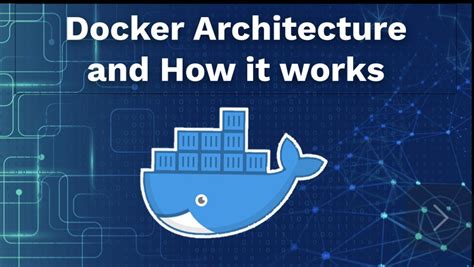
In today's technology-driven world, where efficient software development and deployment are crucial, containerization has emerged as a powerful solution. Docker, a leading containerization platform, allows developers to package their applications together with their dependencies into a single, portable unit called a container. In this section, we will explore the concept of Docker and its importance in modern software development practices.
Containerization: Docker enables developers to encapsulate their applications and their dependencies into lightweight, self-sufficient containers. These containers can run on any Linux system, regardless of the underlying infrastructure, making them highly portable.
Isolation: Docker provides a high level of isolation for applications, ensuring that each container runs independently without interfering with other containers or the host system. This isolation allows developers to replicate the exact runtime environment needed for their applications, ensuring consistent behavior across different environments.
Efficiency: Docker containers are designed to be lightweight and start quickly, enabling rapid application deployment and scalability. The use of containerization reduces resource overhead and optimizes infrastructure utilization, improving overall system efficiency.
Versioning and Rollbacks: With Docker, developers can easily version their applications by maintaining different container images. This allows for easy rollbacks to previous versions in case of any issues or bugs, ensuring stability and reliability in the software development lifecycle.
Collaboration and Reproducibility: Docker images can be easily shared and distributed, enabling seamless collaboration between development teams. By sharing a Docker image, developers can ensure that their applications are reproduced accurately in different environments, eliminating the notorious "it works on my machine" problem.
Overall, Docker has revolutionized the way software is developed, deployed, and managed. Its ability to package applications and their dependencies into portable containers brings numerous benefits, including improved efficiency, scalability, and reproducibility, making it a preferred choice for modern software development practices.
Benefits of Utilizing Docker for Application Development and Deployment
Docker has emerged as a game-changer in the software development and deployment landscape. It offers a range of advantages that streamline the process and improve the efficiency of building and deploying applications. This section will explore the inherent benefits of incorporating Docker into your development workflow.
Simplifying Application Delivery: Docker simplifies the process of packaging applications and their dependencies into containers, enabling consistent deployment across different environments. This eliminates the need for manual configuration and reduces potential compatibility issues, ensuring that your application works consistently regardless of the underlying infrastructure.
Enhanced Portability: Docker allows applications to be bundled into self-contained containers, encapsulating all the necessary components and libraries required for their successful execution. This high degree of portability enables seamless deployment across different operating systems and hosting platforms, ensuring that your application functions consistently irrespective of the deployment environment.
Improved Scalability and Resource Efficiency: With Docker, you can easily scale your application horizontally by increasing the number of container instances. This lightweight virtualization technology minimizes resource utilization and enables efficient utilization of system resources, consequently optimizing application performance and reducing infrastructure costs.
Facilitated Collaboration and Continuous Integration: Docker simplifies collaboration among development teams by providing an isolated and reproducible environment for building and testing applications. Integrated with tools like GitLab CI/CD, Docker streamlines the deployment process, making it easier to achieve continuous integration, delivery, and deployment. This ensures that your application is always up-to-date and free from potential production issues.
Robust Security and Isolation: Docker implements strong isolation mechanisms that keep applications and their dependencies separate from the underlying host system. This isolation adds an extra layer of security, as any vulnerabilities or malicious activities within a container are contained within that container and do not affect the underlying infrastructure. Additionally, Docker provides tools to secure and monitor application containers, further enhancing the security of your applications.
In summary, adopting Docker as part of your application development and deployment strategy brings numerous benefits. It simplifies the delivery process, ensures consistent performance across different environments, enhances scalability and resource efficiency, facilitates collaboration, and provides robust security and isolation. These advantages make Docker an invaluable tool for modern software development and deployment workflows.
Setting up Continuous Integration and Continuous Deployment with GitLab
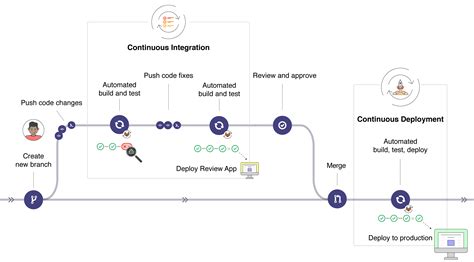
In this section, we will explore the process of configuring and implementing a CI/CD pipeline using GitLab. Continuous Integration (CI) involves the automated building and testing of code changes to ensure that they integrate without conflicts. Continuous Deployment (CD) encompasses the automated deployment of these changes to a production environment. By setting up GitLab CI/CD, development teams can streamline their workflow and ensure the swift and efficient delivery of new features and bug fixes.
To begin, let's discuss the steps involved in setting up GitLab CI/CD:
| Step 1 | Enable CI/CD |
| Step 2 | Defining a CI/CD Configuration File |
| Step 3 | Configuring GitLab Runner |
| Step 4 | Creating a GitLab CI/CD Pipeline |
| Step 5 | Monitoring and Managing CI/CD Pipelines |
In Step 1, we will explore how to enable CI/CD functionality in a GitLab project. This involves accessing the project settings and enabling the CI/CD Pipelines feature. Once enabled, we can move on to defining our CI/CD configuration.
Step 2 involves creating a CI/CD configuration file, typically named .gitlab-ci.yml, which defines the stages, jobs, and steps required to build, test, and deploy our application. We'll cover the required syntax and best practices for writing this file.
In Step 3, we will configure a GitLab Runner, which is responsible for executing our CI/CD pipelines. The Runner can be installed on various platforms and offers a wide range of customization options to suit our needs.
Step 4 dives into the process of creating a GitLab CI/CD pipeline using the defined configuration file. We'll explore how to trigger a pipeline manually or automatically upon specific events like code pushes or merge requests.
Finally, in Step 5, we'll learn how to monitor and manage our CI/CD pipelines through the GitLab interface, gaining insights into the status, progress, and logs of each pipeline. We'll also cover the available options for troubleshooting and retrying failed pipelines, ensuring smooth and efficient CI/CD processes.
Creating a Repository for the Application
In this section, we will discuss the process of setting up a GitLab repository to host the application code. By creating a repository, you can conveniently store and manage all the files and versions related to your application in a centralized location.
Start by logging into your GitLab account and navigating to the Projects section. Click on the "New Project" button to initiate the creation process. Fill in the required information such as project name, description, and visibility level. You can choose to make the repository public or private, depending on your requirements.
Additionally, consider adding relevant tags and assigning appropriate project members to ensure smooth collaboration. Once all the details are entered, click on the "Create project" button to finalize the repository creation.
After successfully creating the repository, you can now proceed to upload your application code. GitLab provides multiple options to import existing code, such as cloning from a remote repository or directly uploading files from your computer. Choose the method that suits your needs and follow the prompts to complete the code transfer.
It is important to structure your repository in a logical manner. Organize your files into directories and create a clear folder hierarchy that reflects the structure of your application. This will make it easier for other project members to navigate and locate specific files.
Remember to commit and push your changes regularly to the repository, ensuring that all modifications are tracked and recorded. Utilize GitLab's version control features to manage branches, review code, and merge changes from different contributors.
The successful creation of a GitLab repository for your application establishes a solid foundation for the development and version control process. By leveraging the collaboration capabilities and intuitive interface provided by GitLab, you can streamline your workflow and ensure efficient project management.
| Benefits of Creating a GitLab Repository: |
|---|
| Centralized storage and management of application code |
| Easy collaboration with project members |
| Version control features for tracking changes |
| Structured repository organization for clarity |
| Efficient workflow management |
Setting up the Pipeline for Docker Image Creation and Release
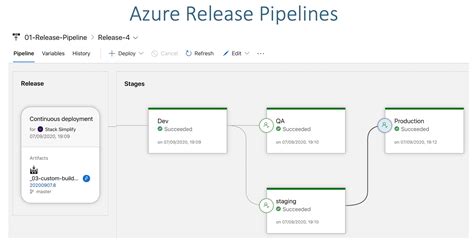
In this section, we will discuss the steps required to configure the continuous integration and continuous delivery (CI/CD) pipeline for the creation and deployment of a Docker image. We will explore the necessary configurations and settings needed to automate the build and release process using GitLab's CI/CD features.
To begin, we will outline the overall approach to building and deploying Docker images through the CI/CD pipeline. We will discuss the importance of having a reliable and efficient CI/CD process in place and the benefits it brings to streamlining the development and deployment workflow. Furthermore, we will explore the various stages involved in the pipeline, from code commit to image release, highlighting the role of each stage and its significance in the overall process.
Next, we will delve into the specifics of configuring the CI/CD pipeline for Docker image build and deployment. We will cover the necessary steps to set up a GitLab repository that integrates with the CI/CD pipeline and fulfills the requirements for Docker image creation and release. This will include configuring the appropriate runners, defining the pipeline stages, and establishing the necessary triggers and variables to automate the process effectively.
Additionally, we will explore the importance of version control and how it ties into the CI/CD pipeline for Docker images. We will discuss the significance of utilizing GitLab's version control system to manage code changes and track the history of image releases. We will also explore how to leverage GitLab's branching and merge request features to ensure a controlled and efficient release process, allowing for collaboration and review before deploying the final Docker image.
Finally, we will provide a practical implementation example, showcasing a step-by-step guide to configuring the CI/CD pipeline for Docker image build and deployment using GitLab. We will outline the necessary configurations and settings required to replicate the pipeline and provide insights into potential pitfalls and best practices to ensure a smooth and successful implementation.
By the end of this section, you will have a comprehensive understanding of how to configure the CI/CD pipeline for Docker image build and deployment, empowering you to automate and streamline the process effectively within your Linux environment using GitLab's robust CI/CD features.
Creating a Docker Build
In this section, we will explore the process of constructing a Docker build for your project. We will discuss the steps required to create a containerized environment, incorporating various functionalities and tools for efficient development. By following these guidelines, you can ensure a streamlined and reproducible approach to building your Docker image.
| Step | Description |
|---|---|
| Step 1 | Setting up the project directory |
| Step 2 | Defining the Dockerfile |
| Step 3 | Adding dependencies and configurations |
| Step 4 | Building the Docker image |
| Step 5 | Verifying the Docker image |
| Step 6 | Testing and optimizing the Docker build |
By breaking down the creation of a Docker image into these steps, you can ensure an organized and structured approach. It allows for better management of dependencies, configurations, and integration with other tools. Building a Docker image forms the foundation for successful deployment and continuous integration and deployment processes.
Writing a Dockerfile for the application
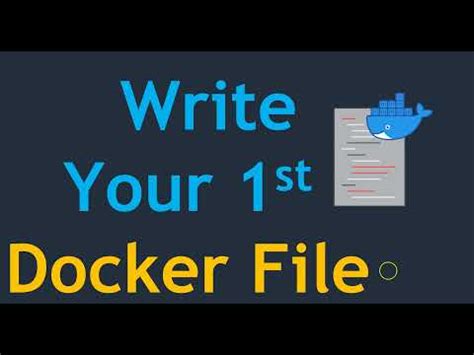
In this section, we will focus on the process of creating a Dockerfile that will define the configuration and dependencies for our application container. By carefully crafting this file, we can ensure that our application is built and runs consistently across different environments.
We will start by discussing the key components and syntax used in a Dockerfile, allowing us to understand its structure and purpose. Then, we will explore various techniques and best practices for defining the necessary instructions, including adding dependencies, setting environment variables, and copying source code into the container.
Additionally, we will cover advanced topics such as utilizing Docker layers to improve build efficiency and reducing the overall image size. By the end of this section, you will have a solid understanding of how to write an effective Dockerfile for your application and optimize it for production use.
- Understanding the structure and syntax of a Dockerfile
- Defining dependencies and environment variables
- Copying source code into the container
- Utilizing Docker layers for efficient builds
- Optimizing the image size for production
Developing the Docker container via GitLab continuous integration and continuous deployment
In this section, we will explore the process of creating the Docker container for our application using the powerful capabilities of GitLab CI/CD. By leveraging the automation provided by GitLab, you can streamline the development and deployment of your containerized application.
Firstly, GitLab CI/CD offers a seamless integration with your Git repository, allowing you to define and manage your build and deployment pipelines. By utilizing the CI/CD pipeline, you can automate the steps required to build and push your Docker image. This eliminates the need for manual intervention, reducing the chances of errors and accelerating the overall development process.
Within the CI/CD pipeline, you can define various stages and jobs that will be executed sequentially or in parallel. These jobs can include actions such as cloning the repository, installing dependencies, running tests, building the Docker image, and deploying the container. You have the flexibility to customize these actions to suit the specific requirements of your project.
By incorporating GitLab's powerful CI/CD configuration file, known as .gitlab-ci.yml, you can define the steps and commands necessary to build the Docker image. This file allows you to specify the base image, install any required dependencies, copy the application code into the container, and set up any additional configurations. With this configuration file in place, GitLab CI/CD will execute these instructions automatically when triggered by a specific event, such as a commit or a merge request.
To ensure a smooth build process, it is essential to define a Dockerfile that outlines the necessary instructions for building the image. This file serves as a blueprint for creating the container and allows you to specify the environment, dependencies, and runtime settings for your application. The Dockerfile can also include steps to expose certain ports, define entry points, and manage any necessary volumes.
Once the Docker image is successfully built using GitLab CI/CD, it can be pushed to a container registry, such as GitLab's built-in registry or an external service like Docker Hub. The image can then be easily deployed to any compatible hosting environment, paving the way for seamless and efficient application delivery. GitLab CI/CD provides comprehensive integration options with major cloud providers and deployment tools, enabling you to deploy your container to a variety of targets, such as Kubernetes clusters or virtual machines.
In conclusion, GitLab CI/CD empowers developers to effortlessly build and deploy Docker containers through a streamlined and automated process. By leveraging the full potential of GitLab's CI/CD pipeline, you can significantly enhance the speed, reliability, and scalability of your containerized applications.
Deploying the Containerized Solution
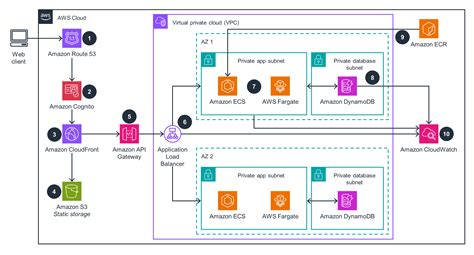
Once the container image has been successfully built and tested, it is time to deploy it in a production environment. This section focuses on the deployment process, including the necessary steps and considerations.
Deploying the containerized solution involves:
- Choosing the appropriate deployment strategy based on your requirements and preferences.
- Ensuring the availability of the target environment and necessary resources.
- Pulling the container image from the container registry to the deployment environment.
- Configuring the deployment parameters and environment-specific settings.
- Starting the container and monitoring its status.
- Verifying the successful deployment and ensuring the desired functionality.
It is essential to consider various factors during the deployment process, such as scalability, security, and performance. Additionally, monitoring tools and error handling mechanisms should be implemented to detect and resolve any issues that may arise.
Deploying the container image successfully is a critical milestone in the software development lifecycle, enabling efficient and reliable deployment of applications and services.
How to Deploy Your Own Gitlab CE Instance with Ubuntu on Linode
How to Deploy Your Own Gitlab CE Instance with Ubuntu on Linode by Learn Linux TV 58,512 views 1 year ago 21 minutes
FAQ
What is Docker?
Docker is an open-source platform that allows you to automate the deployment, scaling, and management of applications using containerization.
What is GitLab CI/CD?
GitLab CI/CD is a continuous integration and continuous delivery platform that helps automate the process of building, testing, and deploying software applications.
Why should I use Docker images in Linux with GitLab CI/CD?
Using Docker images in Linux with GitLab CI/CD offers several benefits such as consistent and reproducible builds, easy deployment and scaling, simplified application management, and improved development workflow.
How do I build a Docker image in Linux with GitLab CI/CD?
To build a Docker image in Linux with GitLab CI/CD, you can define a CI/CD pipeline in your GitLab repository's configuration file (usually `.gitlab-ci.yml`). Within the pipeline, you can specify the steps to build the Docker image, such as defining the base image, installing dependencies, copying application code, and configuring any necessary environment variables or settings.
Can I deploy a Docker image directly from GitLab CI/CD?
Yes, you can deploy a Docker image directly from GitLab CI/CD. Once the Docker image is built within the CI/CD pipeline, you can use GitLab's built-in deployment functionality or scripts to push the image to a container registry, deploy it to a specific target environment, or trigger an automated deployment workflow.
What is Docker?
Docker is an open-source platform that allows you to automate the deployment, scaling, and management of applications using containerization.




